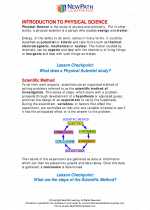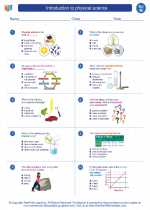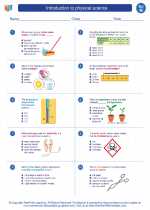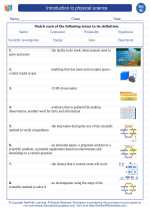Newton's Third Law of Motion
Newton's Third Law states that for every action, there is an equal and opposite reaction. This law has important implications in understanding the behavior of objects in motion.
Understanding Newton's Third Law:
Newton's Third Law is a fundamental principle in physics that helps to explain the interactions between objects. It essentially states that forces always occur in pairs - if object A exerts a force on object B, then object B exerts an equal force in the opposite direction on object A.
Examples of Newton's Third Law in Action:
- Walking: When you walk, your foot pushes backward on the ground, and the ground pushes forward on your foot, propelling you forward.
- Balloons: When air is released from a balloon, the balloon moves in the opposite direction due to the expulsion of the air.
- Swimming: As you push the water backward with your arms and legs, the water pushes you forward, allowing you to move through the water.
Study Guide for Newton's Third Law:
Key Concepts:
- Action and Reaction: Understand that for every force, there is an equal and opposite force acting on another object.
- Force Pairs: Recognize that forces occur in pairs and act on two different objects.
Real-life Applications:
- Daily Examples: Identify and explain real-world scenarios where Newton's Third Law is at play, such as in sports, transportation, or nature.
- Safety and Engineering: Explore how this law influences the design of vehicles, safety equipment, and various engineering applications.
Practice Problems:
- Force Calculations: Practice calculating the forces involved in different scenarios where Newton's Third Law applies.
- Free Body Diagrams: Create diagrams to represent the action and reaction forces in various situations.
Further Exploration:
- Advanced Applications: Research advanced applications of Newton's Third Law in fields such as aerospace, robotics, and biomechanics.
- Historical Context: Explore the historical development of Newton's laws and their impact on scientific understanding.
By understanding and applying Newton's Third Law, you can gain insights into the fundamental principles that govern the motion and interactions of objects in the universe.
.




